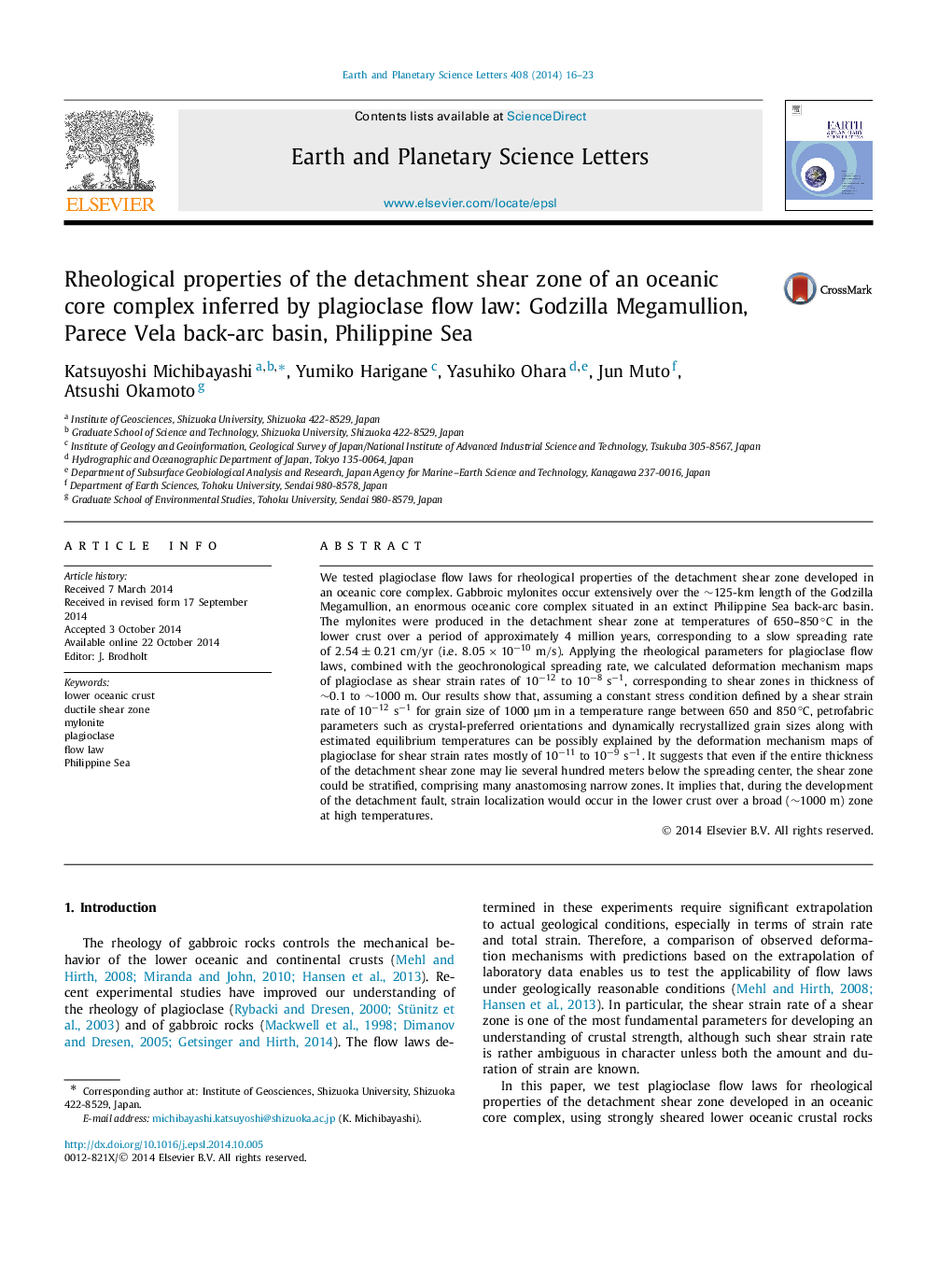| Article ID | Journal | Published Year | Pages | File Type |
|---|---|---|---|---|
| 6428669 | Earth and Planetary Science Letters | 2014 | 8 Pages |
â¢Plagioclase flow laws have been tested for the detachment shear zone of an OCC.â¢Shear strain rates of 10â11 to 10â9 sâ1 can explain the rheology of plagioclase.â¢A broad shear zone may consist of many anastomosing narrow zones.â¢Strain localization would occur in the lower crust during asymmetric shearing.
We tested plagioclase flow laws for rheological properties of the detachment shear zone developed in an oceanic core complex. Gabbroic mylonites occur extensively over the â¼125-km length of the Godzilla Megamullion, an enormous oceanic core complex situated in an extinct Philippine Sea back-arc basin. The mylonites were produced in the detachment shear zone at temperatures of 650-850â°C in the lower crust over a period of approximately 4 million years, corresponding to a slow spreading rate of 2.54±0.21 cm/yr (i.e. 8.05Ã10â10 m/s). Applying the rheological parameters for plagioclase flow laws, combined with the geochronological spreading rate, we calculated deformation mechanism maps of plagioclase as shear strain rates of 10â12 to 10â8 sâ1, corresponding to shear zones in thickness of â¼0.1 to â¼1000 m. Our results show that, assuming a constant stress condition defined by a shear strain rate of 10â12 sâ1 for grain size of 1000 μm in a temperature range between 650 and 850â°C, petrofabric parameters such as crystal-preferred orientations and dynamically recrystallized grain sizes along with estimated equilibrium temperatures can be possibly explained by the deformation mechanism maps of plagioclase for shear strain rates mostly of 10â11 to 10â9 sâ1. It suggests that even if the entire thickness of the detachment shear zone may lie several hundred meters below the spreading center, the shear zone could be stratified, comprising many anastomosing narrow zones. It implies that, during the development of the detachment fault, strain localization would occur in the lower crust over a broad (â¼1000 m) zone at high temperatures.
